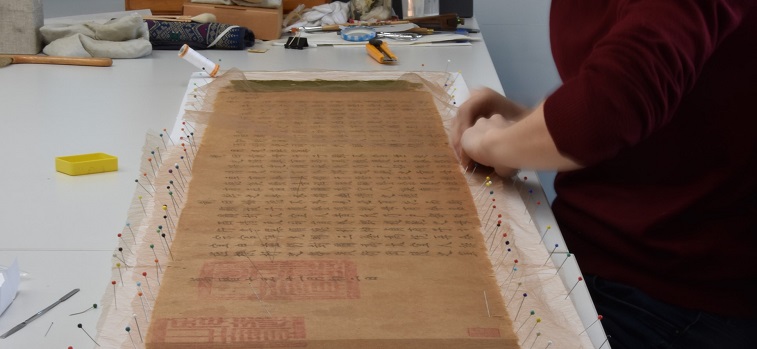This blog is a reposting from Leiden Asian Library Facebook page, for dissemination purposes. Post by Mauk Evertse, BA Chinese studies. Photos by Karin Scheper and Sjoukje Telleman.
Have you ever wondered what it is like to restore a 500-year old scroll? Then keep reading! In this post I hope to give insight into the process of the conservation of the Leiden University Library’s most recent acquisition for the Chinese special collections: The Ming Imperial edict.
When the edict arrived it was in a fragile condition. The edges were severely damaged with a few tears on the top and bottom, and from the top of the scroll some fabric was missing. The nature of the damage could indicate that the rolled up scroll could have been pressed flat due to its rigid supporting core being lost, which would have caused these vertical cracks [Photo 1, 2].
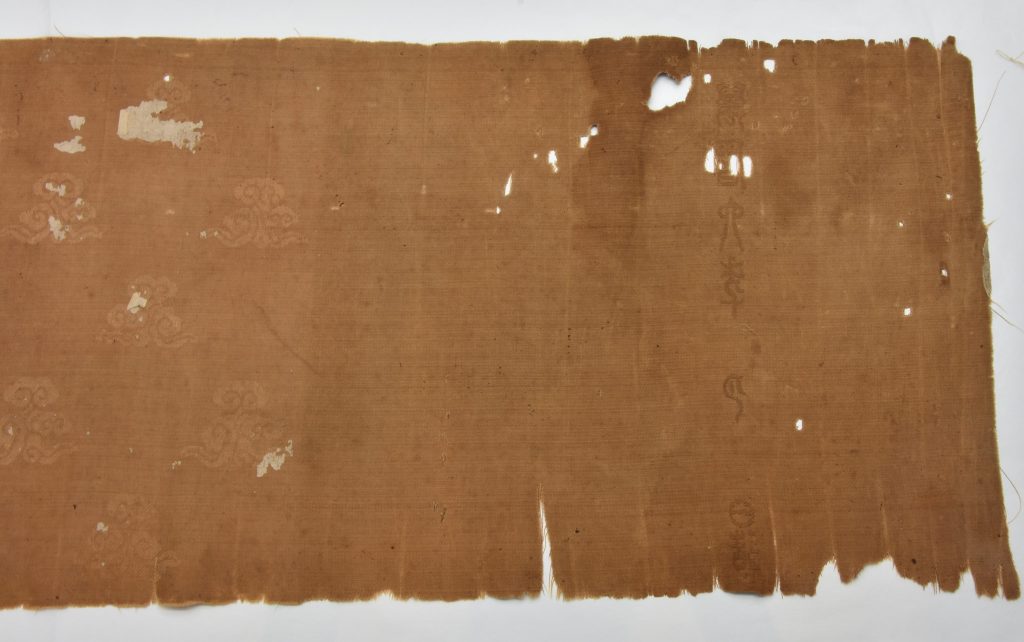
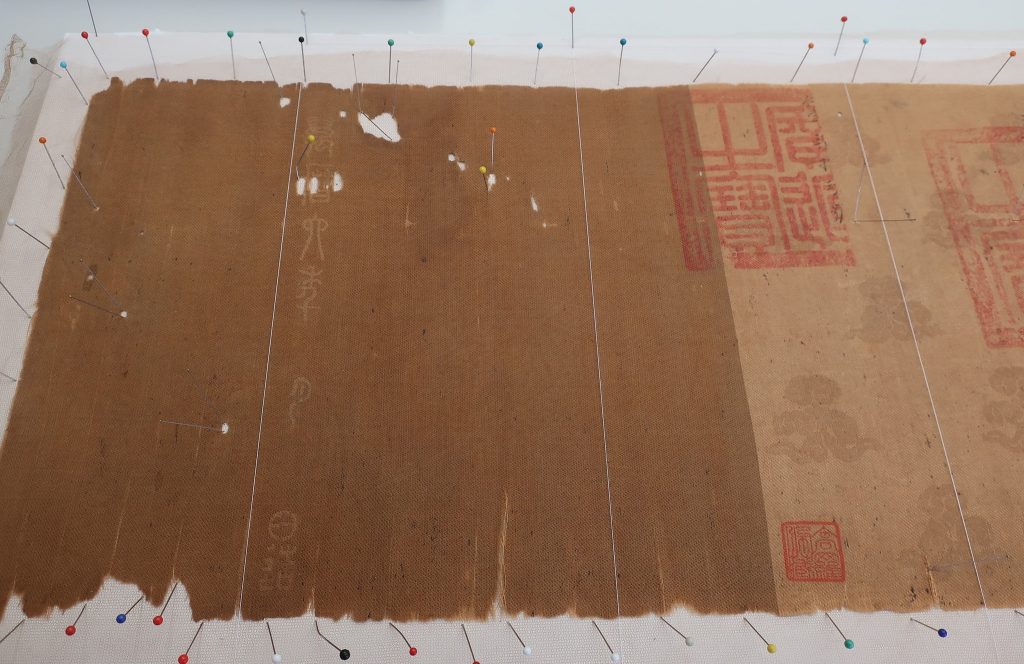
The previous owner Robert van Gulik’s youngest son, T. van Gulik, has told me that his father stored his scrolls in drawers and occasionally rolled them out to study them. When the scroll arrived it was being kept in a tubular container, but for conservation purposes the diameter of this container would be too small. It would cause tension on the original material. A further concern was that we want both sides of the scroll to be accessible for future research. How can the damage be fixed?
To answer that questions we need to weigh in all the factors. The edict is supposed to be rolled up; do we want to keep that aspect intact? What do we lose if we don’t? What do we gain if we do? Because of the nature of the edict’s damage the material needs to be supported to halt further deterioration. Due to the fact that the edict has valuable content on the front and the backside the conservator decided to use ‘tule’. Tule is a see-through silk mesh that allows viewers to see the original item and gives them the ability to roll up the scroll [Photo 3, 4].
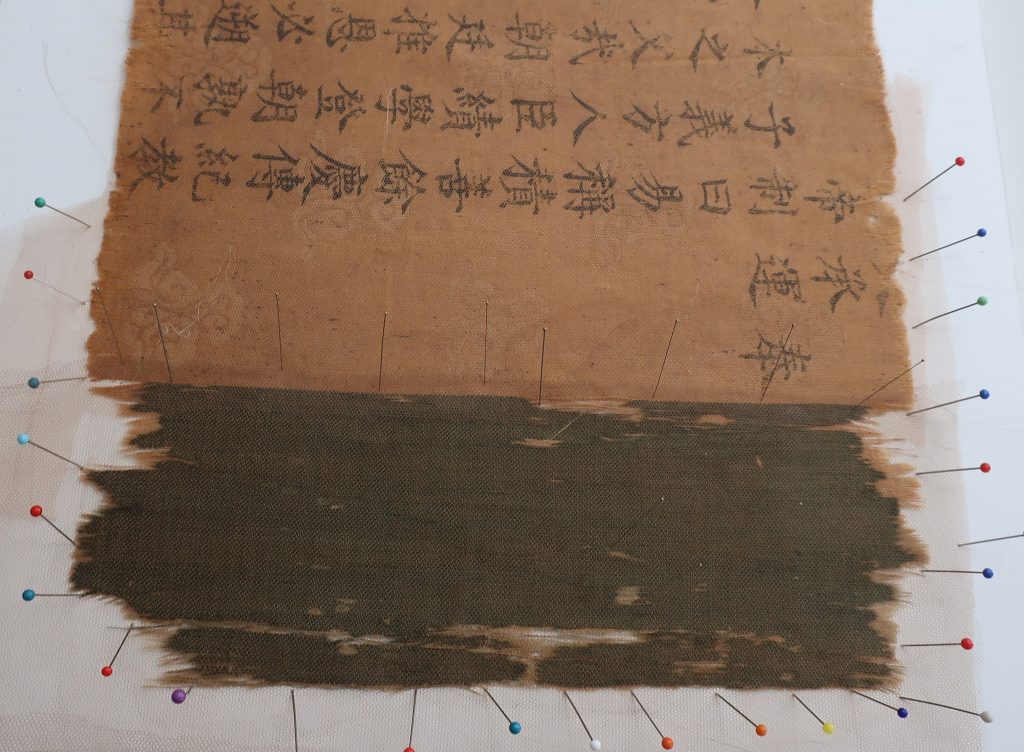
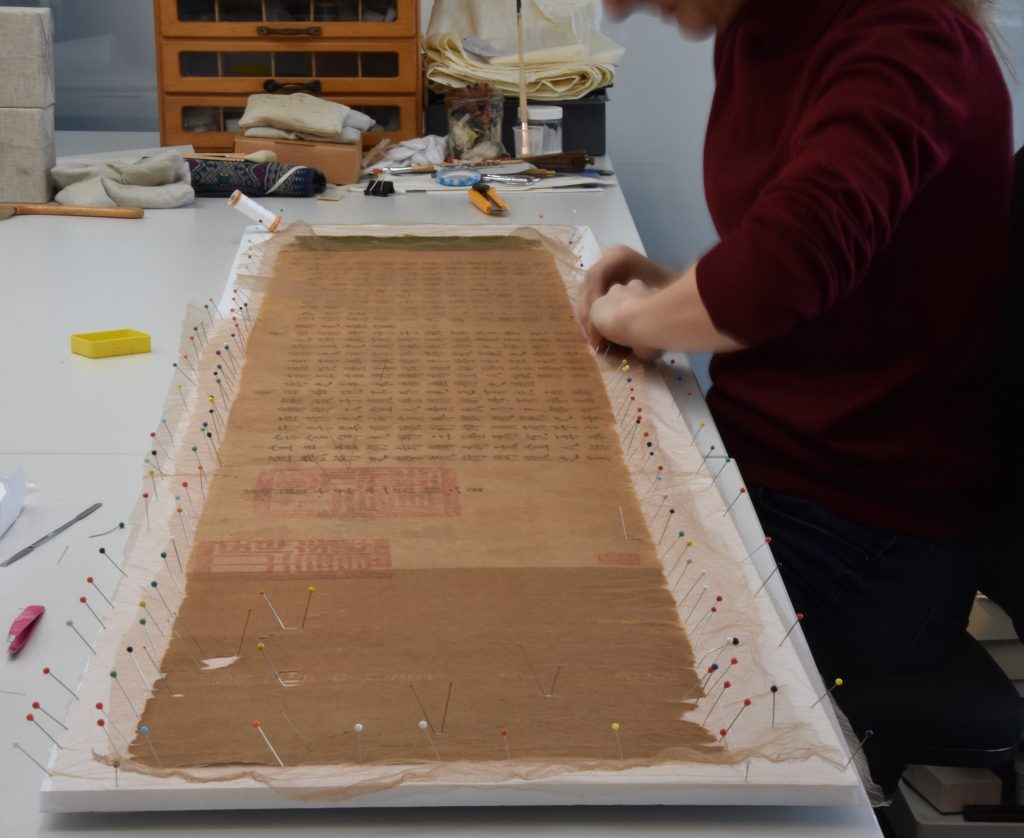
Another option would have been to adhere a thin supportive layer to the backside of the scroll but this would impact the visual access. The most suitable method for storing items after conservation would be to keep them flat.
If some parts of the objects have been lost, they are gone: It is not necessary to ‘fill in’ what is missing, that is for other researchers to decide. The key question for us was: what kind of expertise was most needed to work on such an old and delicate piece of textile? Although the edict contains text, it is not a regular document or manuscript. Because the writing substrate is a fabric, a textile conservator was consulted for the edict’s conservation. Sjoukje Telleman, a young professional, advised us and treated the edict.
I imagined it would be vital to understand the Chinese language to be able to conserve this edict. But when I discussed this with the experts we stumbled upon a common misconception of the conservator’s profession, namely that conservators try to restore an item to its original state. I learned that the conservator’s job is much more to preserve the item rather than to repair it: maintaining its current state, safeguarding traces of historic use, and stopping it from deteriorating further [Photo 5]. This will help ensure that the objects can survive the test of time!
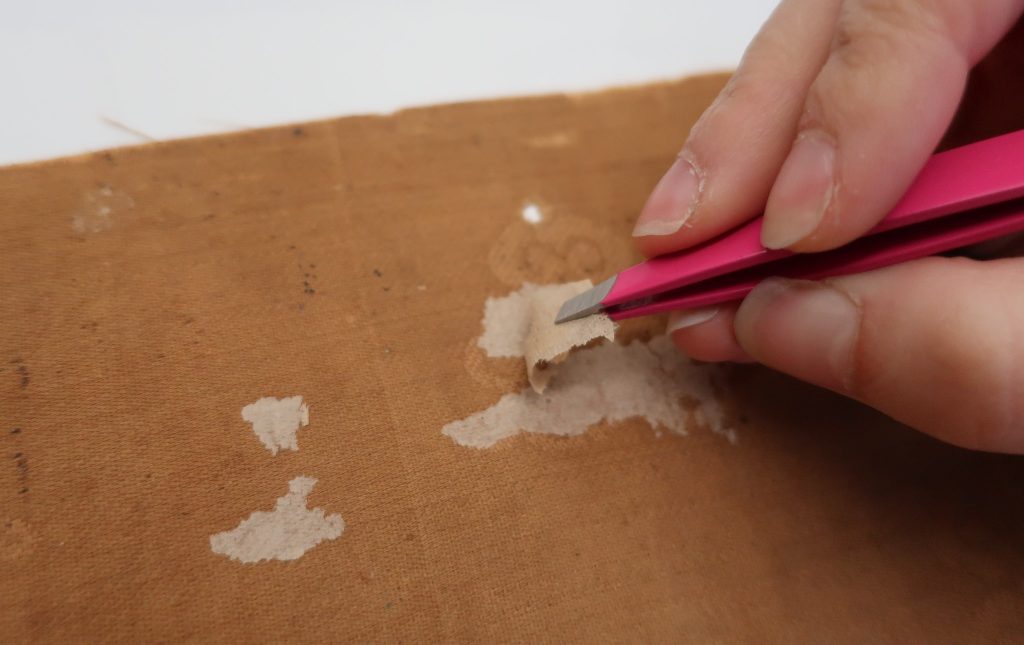
This certainly clears up my misunderstanding of what it means to be a conservator. I learned that the conservator’s job involves a lot of decision making, expertise, skills, organization and consultation. It’s also good to understand that there’s also a key difference between the conservation of research collections and museum collections: research collections have a much stronger focus on the physical accessibility of the originals.
I hope that this rapport has given some insight into the conservator’s profession! I, for one, learned that my initial question was wrong. It shouldn’t have been: how can it be fixed? But rather: how can it be conserved!
Post by Mauk Evertse, BA Chinese studies. Photos by Karin Scheper and Sjoukje Telleman.
images from Asian Library Facebook post.
Leiden University Libraries is associate partner in the PAGODE – Europeana China project.
PAGODE – Europeana China is co-financed by the Connecting Europe Facility Programme of the European Union, under GA n. INEA/CEF/ICT/A2019/1931839

